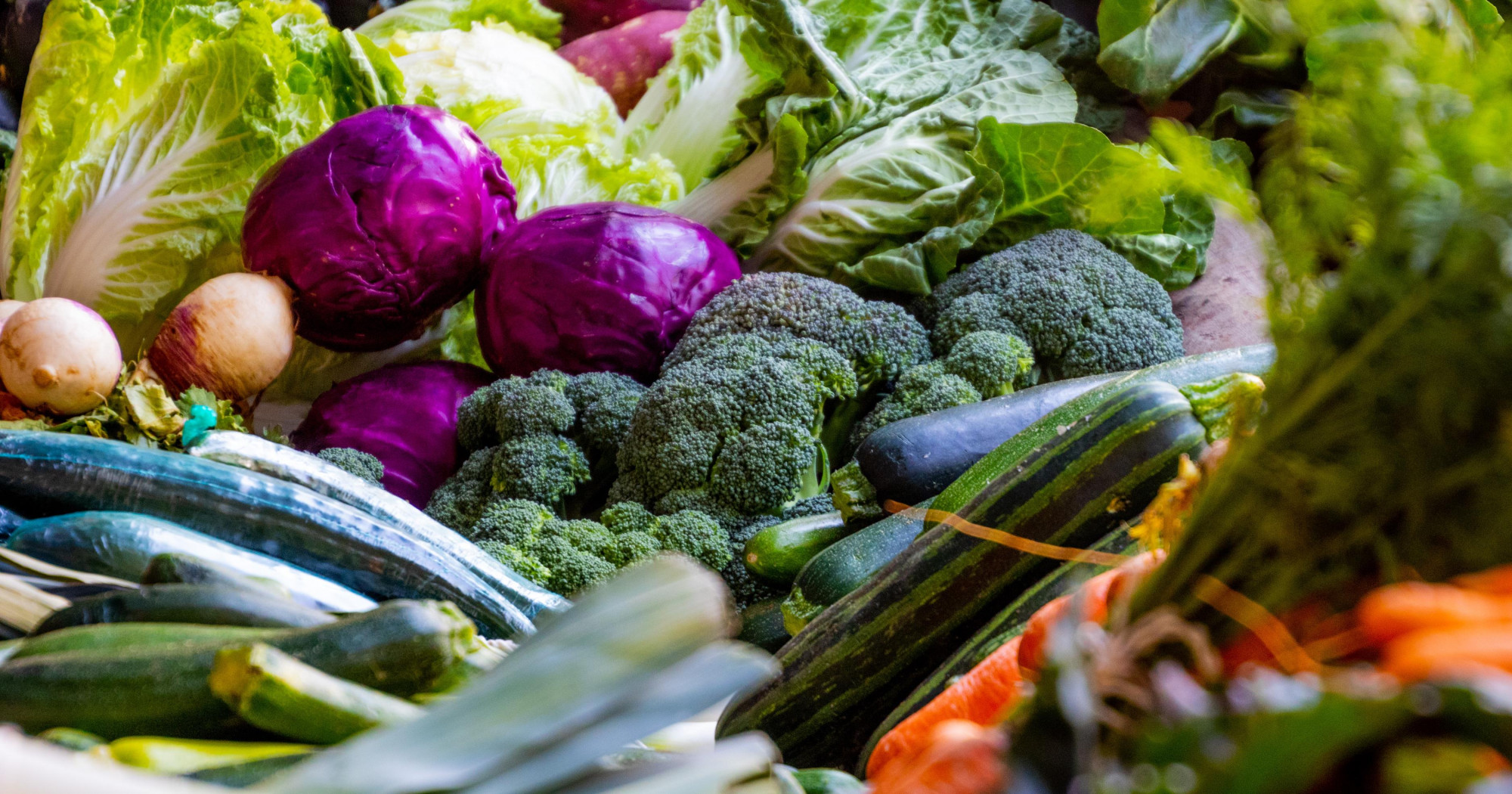Breast cancer is one of the most common cancers affecting women worldwide, but research shows that a healthy diet can play a key role in prevention. While no single food can guarantee protection, certain nutrient-rich foods may help reduce risk by supporting immunity, reducing inflammation, and balancing hormones.
According to the American Cancer Society, “About 13 percent of women will develop breast cancer. This means there is a one in eight chance.”
With breast cancer concerns weighing on the minds of many women, and the reality that many of these cancers are lifestyle related
In this blog, we’ll explore the best foods for breast cancer prevention, backed by science, and how you can incorporate them into your daily meals for better health.
Top Foods That May Help Prevent Breast Cancer
01: Cruciferous Vegetables for Breast Cancer Prevention: Nature’s Powerful Protectors
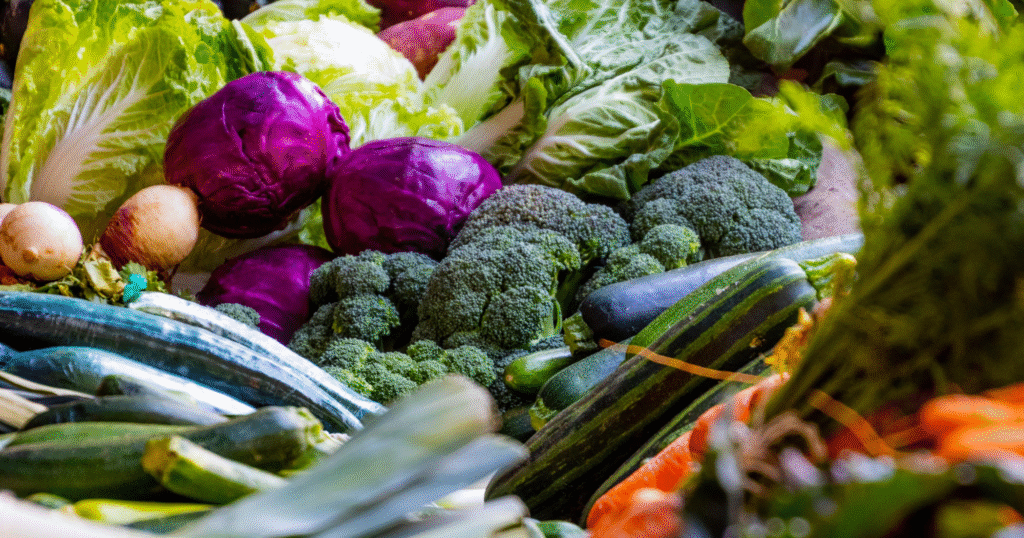
Cruciferous Vegetables for Breast Cancer Prevention: Nature’s Powerful Protectors
Cruciferous vegetables like broccoli, cauliflower, Brussels sprouts, kale, and cabbage are among the best cancer-fighting foods you can eat. Packed with sulforaphane, indole-3-carbinol (I3C), and antioxidants, these veggies help detoxify carcinogens, reduce inflammation, and balance estrogen levels—key factors in breast cancer prevention.
How Cruciferous Vegetables Fight Breast Cancer
- Sulforaphane – A Potent Anti-Cancer Compound
- Found in broccoli and broccoli sprouts, sulforaphane helps activate detox enzymes that remove harmful toxins and may slow cancer cell growth.
- Indole-3-Carbinol (I3C) – Estrogen Metabolism Support
- Present in cauliflower, Brussels sprouts, and kale, I3C helps break down harmful estrogens into safer forms, reducing hormone-related cancer risk.
- High in Fiber & Antioxidants
- Supports gut health and immune function, while antioxidants like vitamin C and flavonoids protect cells from DNA damage.
- Anti-Inflammatory Effects
- Chronic inflammation is linked to cancer, and cruciferous veggies help lower inflammatory markers.
Best Ways to Eat Cruciferous Veggies for Maximum Benefits
- Lightly steam or sauté (preserves sulforaphane better than boiling).
- Add raw broccoli sprouts to salads (highest sulforaphane content).
- Roast Brussels sprouts or cauliflower for a delicious, cancer-fighting side dish.
- Blend kale into smoothies for an easy nutrient boost.
Why You Should Eat Them Regularly
Just 3-5 servings per week of cruciferous vegetables may significantly lower breast cancer risk. Their unique compounds make them a must-have in any anti-cancer diet.
02: Whole Grains for Breast Cancer Prevention: Fiber, Hormone Balance & More

Including whole grains in your diet is a powerful way to support breast cancer prevention. Unlike refined grains (like white bread and white rice), whole grains retain their fiber, vitamins, minerals, and antioxidants, all of which play a role in reducing cancer risk.
How Whole Grains Help Prevent Breast Cancer
- Rich in Fiber – Whole grains like oats, quinoa, brown rice, barley, and whole wheat are packed with dietary fiber, which helps:
- Regulate estrogen levels by binding to excess hormones and removing them from the body.
- Improve digestion and prevent constipation, reducing toxin buildup.
- Support healthy weight management, as obesity is a known risk factor for breast cancer.
- Phytonutrients & Antioxidants – Whole grains contain lignans, phenolic acids, and selenium, which have anti-cancer properties by fighting oxidative stress and inflammation.
- Blood Sugar Control – Foods like steel-cut oats and quinoa have a low glycemic index, helping stabilize blood sugar levels. High blood sugar and insulin resistance have been linked to increased cancer risk.
- Supports Gut Health – The fiber in whole grains feeds beneficial gut bacteria, promoting a healthy microbiome, which is crucial for immune function and reducing inflammation.
Best Whole Grains to Include in Your Diet
- Oats – High in beta-glucan, a fiber that supports immunity.
- Quinoa – A complete protein with all essential amino acids.
- Brown rice – Contains selenium, an antioxidant that protects cells.
- Barley – Rich in fiber and lignans, which may help block cancer growth.
- Whole wheat & rye – Provide B vitamins for energy and cell repair.
How to Add More Whole Grains to Your Meals
- Swap white rice for brown rice or quinoa.
- Choose whole-grain bread and pasta over refined versions.
- Start your day with oatmeal topped with berries and flaxseeds.
- Try barley soups or whole-grain salads for lunch.
Final Thoughts
Whole grains are a simple yet powerful addition to a breast cancer prevention diet. By choosing fiber-rich, nutrient-dense grains, you support hormone balance, gut health, and long-term wellness.
03: Berries for Breast Cancer Prevention: Nature’s Antioxidant Powerhouses
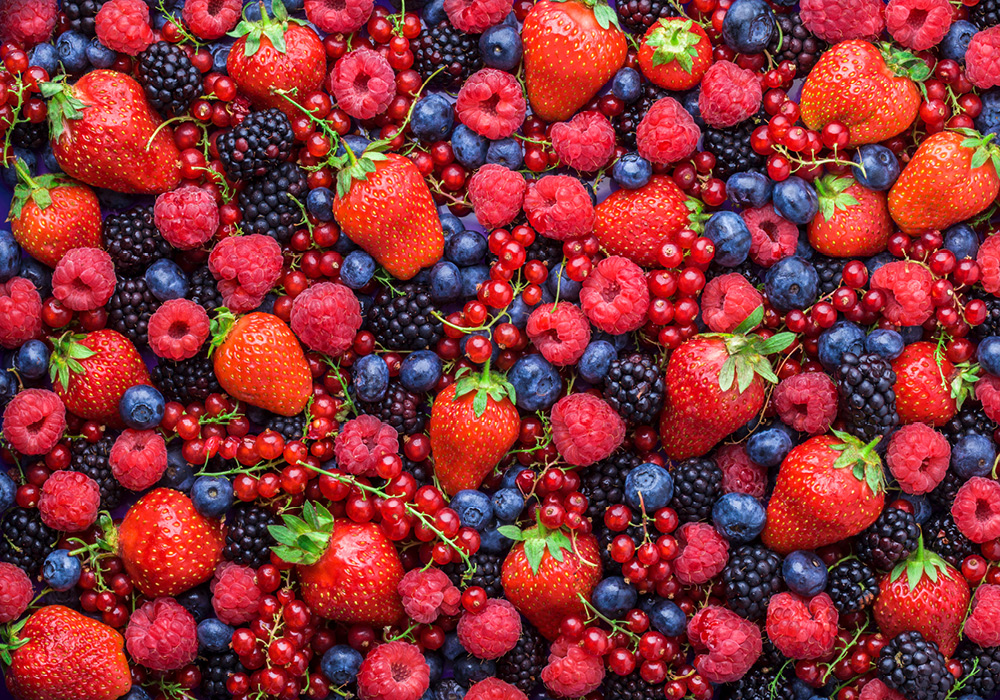
Berries – including blueberries, strawberries, raspberries, blackberries, and acai berries – are among the most potent cancer-fighting superfoods. Packed with ellagic acid, anthocyanins, vitamin C, and fiber, these colorful fruits help neutralize free radicals, reduce inflammation, and protect cells from DNA damage – all crucial for breast cancer prevention.
How Berries Help Prevent Breast Cancer
- Ellagic Acid – Blocks Tumor Growth
- Found in strawberries and raspberries, this powerful polyphenol helps:
- Deactivate cancer-causing compounds
- Slow the growth of cancer cells
- Promote apoptosis (cancer cell death)
- Found in strawberries and raspberries, this powerful polyphenol helps:
- Anthocyanins – Anti-Inflammatory & Antioxidant Boost
- The pigments that give blueberries and blackberries their deep color:
- Reduce oxidative stress (a key cancer trigger)
- Lower chronic inflammation (linked to tumor development)
- The pigments that give blueberries and blackberries their deep color:
- Vitamin C – Immune Defense & Collagen Protection
- Strawberries and raspberries are especially rich in this antioxidant, which:
- Strengthens immunity against abnormal cells
- Protects healthy tissue from radiation/chemotherapy damage
- Strawberries and raspberries are especially rich in this antioxidant, which:
- Fiber – Hormone & Digestive Benefits
- Supports estrogen detoxification through improved gut health
- Helps maintain healthy weight (obesity increases breast cancer risk)
Top Cancer-Fighting Berries & Their Unique Benefits
✔ Blueberries – Highest in anthocyanins (brain & breast protection)
✔ Strawberries – Richest in ellagic acid (blocks carcinogens)
✔ Raspberries – High fiber + ellagitannins (gut microbiome support)
✔ Blackberries – Contains C3G (may inhibit tumor blood supply)
✔ Acai Berries – Extreme ORAC score (ultra-high antioxidant power)
How to Maximize Berry Benefits
- Eat 1/2 cup daily (fresh or frozen – freezing preserves nutrients)
- Pair with healthy fats (like nuts or yogurt) for better absorption
- Choose organic when possible to reduce pesticide exposure
- Add to smoothies, oatmeal, or salads for easy cancer protection
Science-Backed Results
Studies show women who eat 3+ servings of berries per week have:
→ 25-31% lower breast cancer risk (Nurses’ Health Study)
→ Reduced tumor growth rates in animal studies
04: Fatty Fish for Breast Cancer Prevention: The Omega-3 Powerhouse
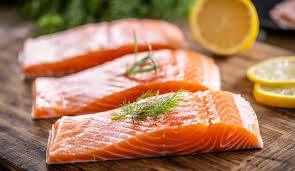
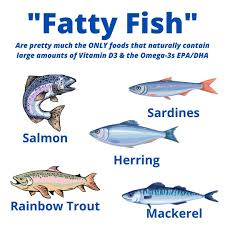
Fatty fish like salmon, mackerel, sardines, and anchovies are nutritional superstars in breast cancer prevention diets. These cold-water fish are packed with EPA and DHA omega-3 fatty acids, powerful anti-inflammatory compounds that research suggests may lower breast cancer risk by up to 14% (International Journal of Cancer).
How Fatty Fish Fights Breast Cancer
- Omega-3s Reduce Inflammation
- Chronic inflammation drives cancer development
- EPA/DHA block pro-inflammatory molecules (like COX-2 and prostaglandins)
- 3+ weekly servings show significant risk reduction in studies
- Hormone Regulation
- Helps balance estrogen metabolism
- May protect against hormone-receptor-positive breast cancers
- Sardines provide vitamin D (linked to lower cancer risk)
- Anti-Tumor Effects
- Omega-3s may:
- Slow cancer cell growth
- Reduce tumor blood supply (angiogenesis inhibition)
- Enhance chemotherapy effectiveness
- Omega-3s may:
Top 5 Cancer-Fighting Fish
- Wild Alaskan Salmon (highest omega-3 content)
- Sardines (with edible bones for calcium)
- Mackerel (contains CoQ10 for cellular energy)
- Anchovies (great for dressings/sauces)
- Herring (rich in selenium for detox)
Smart Consumption Tips
✔ Eat 2-3 servings weekly (3.5oz cooked per serving)
✔ Choose wild-caught when possible (lower toxin risk)
✔ Grill/bake instead of frying to preserve nutrients
✔ Pair with cruciferous veggies for enhanced benefits
⚠ Limit high-mercury fish (tuna, swordfish)
Science Says:
- Women with highest omega-3 levels have 34% lower risk (BMJ study)
- Every 0.1g/day increase in omega-3s reduces risk by 5%
05: Flaxseeds for Breast Cancer Prevention: The Hormone-Balancing Superfood

Flaxseeds are tiny nutritional powerhouses that pack a serious punch in breast cancer prevention. As the richest plant source of lignans (up to 800x more than other foods!), these small seeds offer unique estrogen-modulating and anti-cancer benefits, especially for hormone-receptor-positive breast cancers.
How Flaxseeds Help Prevent Breast Cancer
1. Lignans – Nature’s Estrogen Regulators
- Converted by gut bacteria into enterolactone and enterodiol
- Block excess estrogen from attaching to receptors
- May slow tumor growth by interfering with cancer cell signaling
2. High in Fiber – Detox & Digestion
- Soluble fiber binds to excess hormones for elimination
- Supports healthy gut microbiome (crucial for estrogen metabolism)
- Helps maintain healthy weight (reducing obesity-related cancer risk)
3. Omega-3s (ALA) – Anti-Inflammatory Power
- Reduces chronic inflammation (a cancer driver)
- May help prevent metastasis (spread of cancer cells)
4. Antioxidant Protection
- Contains polyphenols that combat oxidative stress
- Protects cells from DNA damage
Science-Backed Benefits
✅ Postmenopausal women who eat flaxseed daily show:
- 28-31% reduced breast cancer risk (Cancer Epidemiology, Biomarkers & Prevention)
- Lower tumor proliferation markers in breast tissue
✅ Lignans may improve survival rates in breast cancer patients
How to Use Flaxseeds for Maximum Benefits
✔ Grind before eating (whole seeds pass undigested)
✔ 1-2 Tbsp daily (about 15-30g)
✔ Add to:
- Smoothies, oatmeal, or yogurt
- Baked goods (replace 1 egg = 1 Tbsp ground flax + 3 Tbsp water)
- Salads or soups for nutty flavor
⚠ Storage Tip: Keep in fridge/freezer to prevent rancidity
Flaxseed vs. Flax Oil
| Ground Flaxseed | Flaxseed Oil |
|---|---|
| Contains lignans + fiber | No lignans/fiber |
| Must be freshly ground | More concentrated omega-3s |
| Better for cancer prevention | Mainly anti-inflammatory |
06: Turmeric for Breast Cancer Prevention: Curcumin’s Anti-Cancer Power
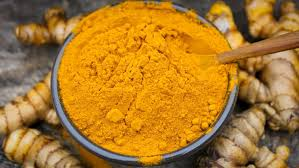
Turmeric’s active compound, curcumin, offers strong anti-inflammatory and antioxidant benefits that may help:
✔ Block cancer cell growth
✔ Reduce tumor spread (metastasis)
✔ Enhance chemo effectiveness
Best Ways to Use:
- Pair with black pepper (boosts absorption by 2000%)
- 1 tsp daily in soups, smoothies, or golden milk
- Choose supplements (standardized 95% curcuminoids)
Science Note: Studies show curcumin may prevent triple-negative breast cancer progression (Cancer Research)
07: Green Tea for Breast Cancer Prevention

Green tea’s catechins, especially EGCG, fight cancer by:
✔ Blocking tumor growth
✔ Protecting DNA from damage
✔ Reducing estrogen activity
How to Drink for Benefits:
- 2-3 cups daily (steep 3-5 mins)
- Choose matcha (higher catechin content)
- Skip milk (blocks absorption)
Science Note: Regular drinkers show 20-30% lower breast cancer risk (Journal of Nutrition).
08: Nuts & Seeds for Breast Cancer Prevention
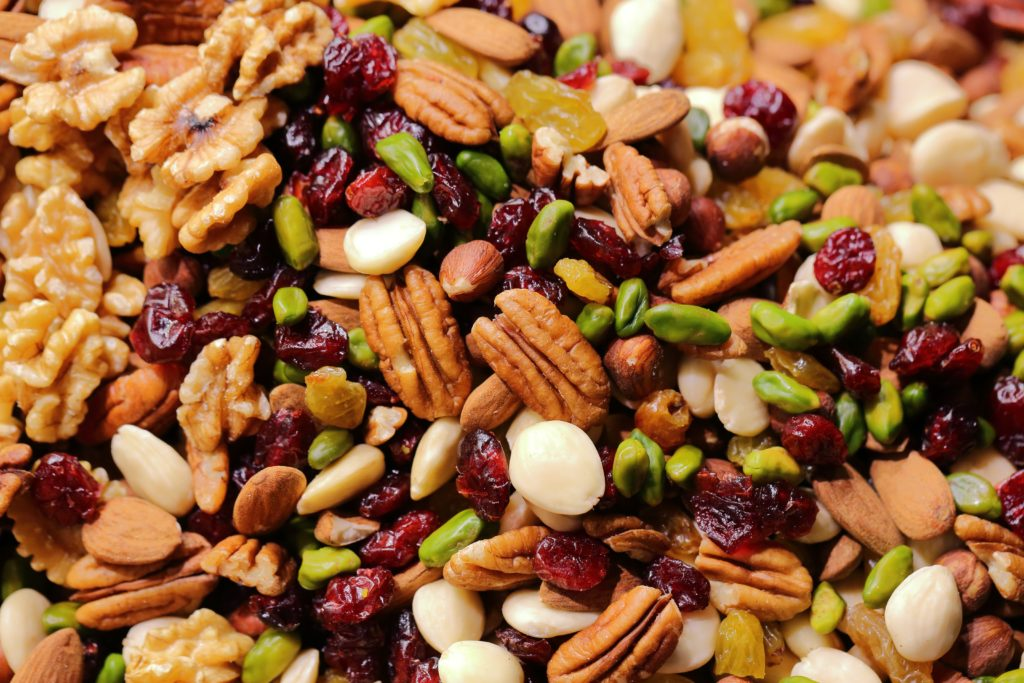
Walnuts, almonds, chia, and flaxseeds deliver powerful cancer-fighting nutrients:
✔ Walnuts – Highest in plant-based omega-3s (reduces inflammation)
✔ Almonds – Rich in vitamin E (protects cells from DNA damage)
✔ Chia seeds – Packed with fiber + antioxidants (removes excess estrogen)
Key Benefits:
→ Slow tumor growth (studies show walnuts may suppress breast cancer cells)
→ Balance hormones (fiber binds to excess estrogen)
→ Boost immunity (selenium in Brazil nuts)
How to Eat:
- 1 oz daily (small handful of nuts/1 tbsp seeds)
- Soak overnight for better digestion
- Sprinkle on yogurt/salads
Science Fact: Women eating nuts ≥5x/week have 34% lower breast cancer risk (International Journal of Cancer).
09: Legumes for Breast Cancer Prevention
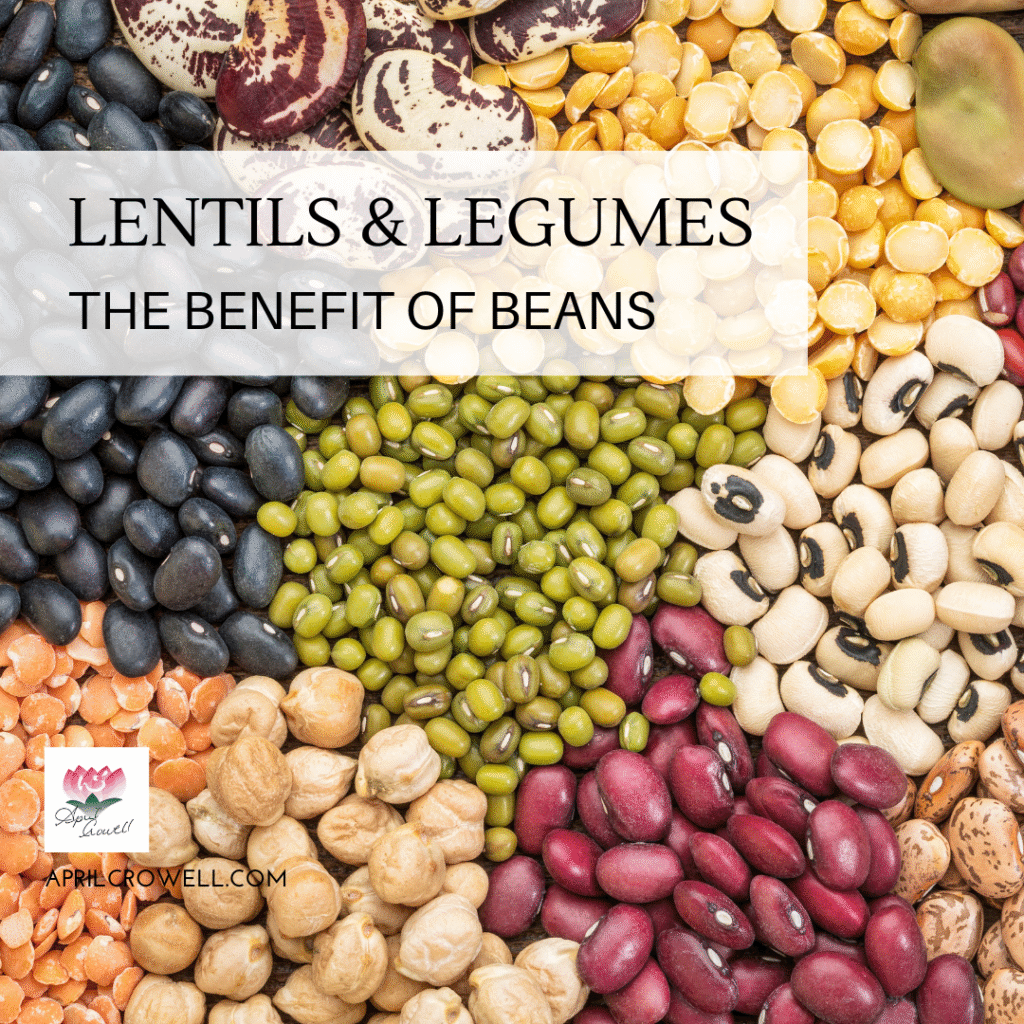
Beans, lentils & chickpeas are fiber-rich cancer fighters that:
✔ Block estrogen absorption (soluble fiber removes excess hormones)
✔ Feed gut probiotics (key for immune defense)
✔ Stabilize blood sugar (lowers insulin-related cancer risk)
Top 3 Picks:
- Lentils – Highest folate content (protects DNA)
- Black beans – Loaded with anthocyanins (anti-tumor)
- Chickpeas – Rich in saponins (slow cancer cell growth)
How to Eat:
- 1/2 cup daily (cooked)
- Sprout lentils to boost nutrients
- Pair with vitamin C (enhances iron absorption)
Science Backed:
Women eating legumes ≥3x/week have 24% lower risk (International Journal of Epidemiology).
10: Garlic & Onions for Breast Cancer Prevention
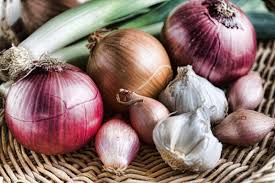
These kitchen staples pack powerful sulfur compounds that actively fight cancer:
✔ Crushed garlic releases allicin – blocks tumor growth
✔ Onions provide quercetin – slows cancer cell division
✔ Both enhance detox of carcinogens
Best Ways to Eat:
- 1-2 raw garlic cloves daily (crush & wait 10 mins before cooking)
- Sauté onions lightly to preserve nutrients
- Add to soups/stir-fries for flavor + protection
Science Fact:
Women eating 1+ servings daily have 50% lower breast cancer risk (Journal of Nutrition).
Keynote Conclusion: Eat to Beat Breast Cancer
A plant-focused diet rich in cruciferous veggies, berries, fatty fish, flaxseeds, turmeric, green tea, nuts, legumes, and garlic/onions provides powerful anti-cancer compounds that:
✔ Balance hormones (fiber & lignans)
✔ Fight inflammation (omega-3s & curcumin)
✔ Protect DNA (antioxidants & sulfur compounds)
💡 How One Natural Powder May Support Women’s Wellness (and More)
While many powders and drinks are marketed for weight loss, the best ones do far more than burn fat. Superfoods like spirulina, turmeric, and bitter melon may support anti-inflammatory pathways and stabilize insulin—two key pieces in the hormonal puzzle that affects women’s long-term breast health. That’s why I recommend options like:”BioVanish” . It’s not just about the scale—it’s about supporting total-body balance, every day-‘BIOVANISH’.
Simple Action: Fill 2/3 of your plate with these science-backed foods for proven prevention. Every bite counts!
Disclaimer:
This blog provides general information only and is not medical advice. Always consult your healthcare provider before making dietary changes, especially if you have a medical condition or are undergoing treatment. Individual needs may vary.
This post contains affiliate links. If you click and purchase, I may receive a small commission at no extra cost to you. I only recommend products I trust and use in alignment with holistic health education. This is not medical advice. Please consult your healthcare provider for personal guidance.

